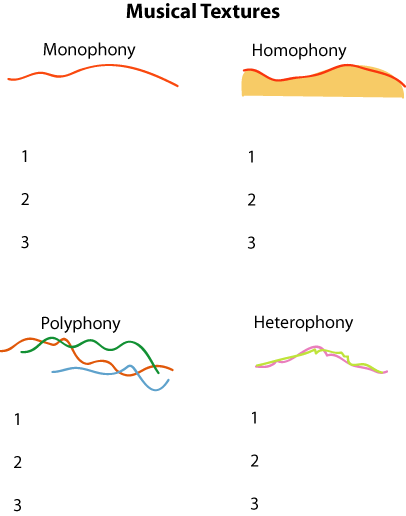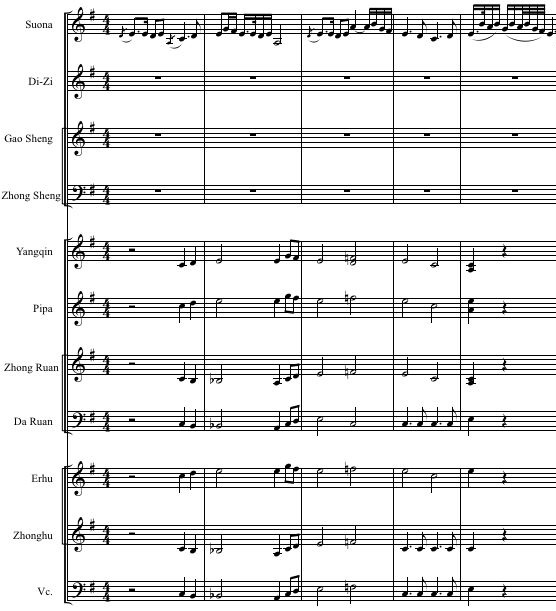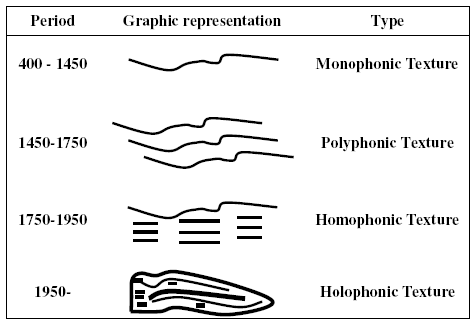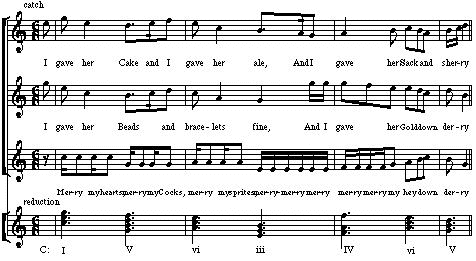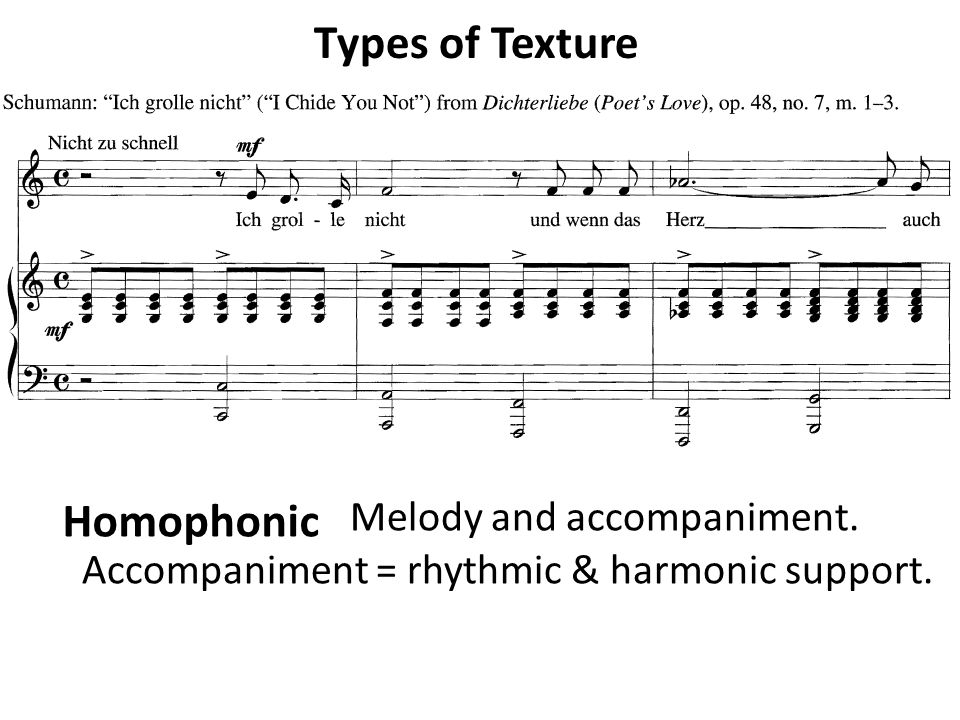Homophonic Texture Example

Below you will find some of the formal terms musicians use to describe texture.
Homophonic texture example. Homophonic music can also be called homophony. The most common type of homophony is melody dominated homophony in which one voice often the highest plays a distinct melody and the accompanying voices work together to articulate an underlying harmony. It might be made up of rhythm only or of a melody line with chordal accompaniment or many interweaving melodies.
Within a homophonic texture other devices can be used such as a walking bass pedal notes or drones. Homophony is the texture we hear most in pop music on the radio film music jazz rock and most classical music of the last century. For example the texture of the music might be thick or thin or it may have many or few layers. Chorale texture is another variant of homophony.
Homophony does not necessarily suppress counterpoint however the allegretto in beethoven s seventh symphony offers an excellent example of essentially homorhythmic counterpoint since it combines two distinct yet rhythmically identical melodies. Homophonic texture also called homophony is by far the most common type of texture found in music today the other two main types of texture are monophonic and polyphonic. Homophony is a texture of music that has one main melody line with a chord structure underneath. In the 15th century italian secular compositions of.
An example can be found at the end of and the glory of the lord from handel s messiah. A homophonic texture may be homorhythmic which means that all parts have the same rhythm.



